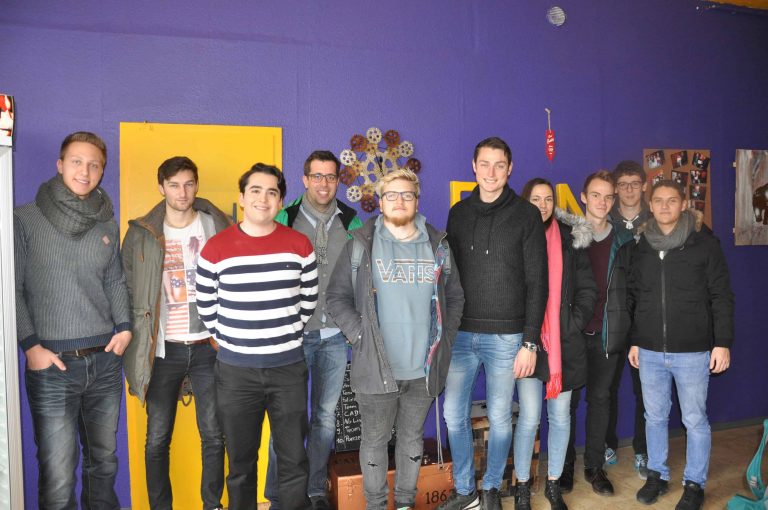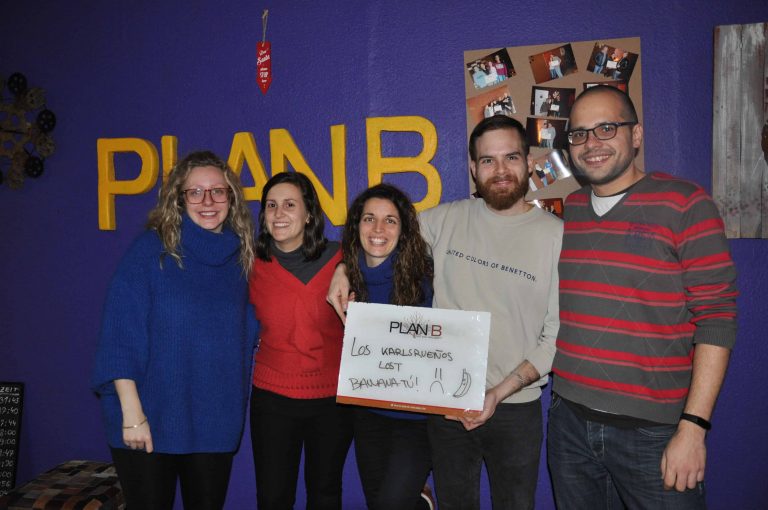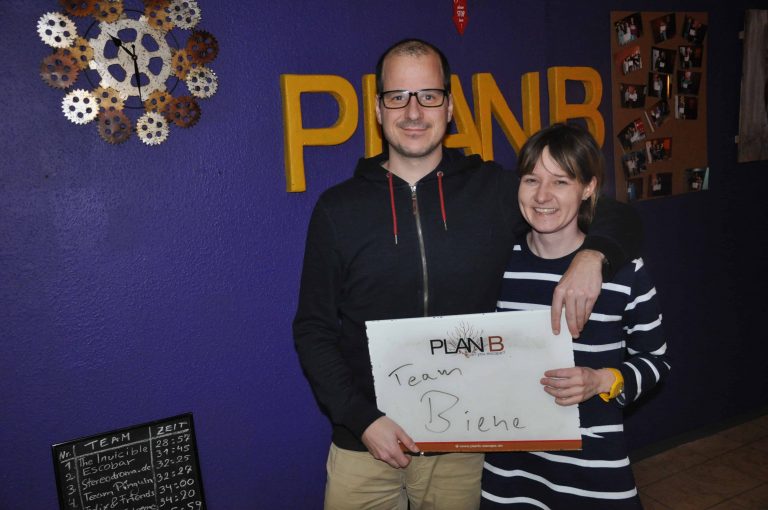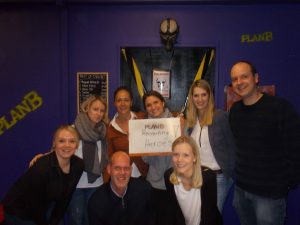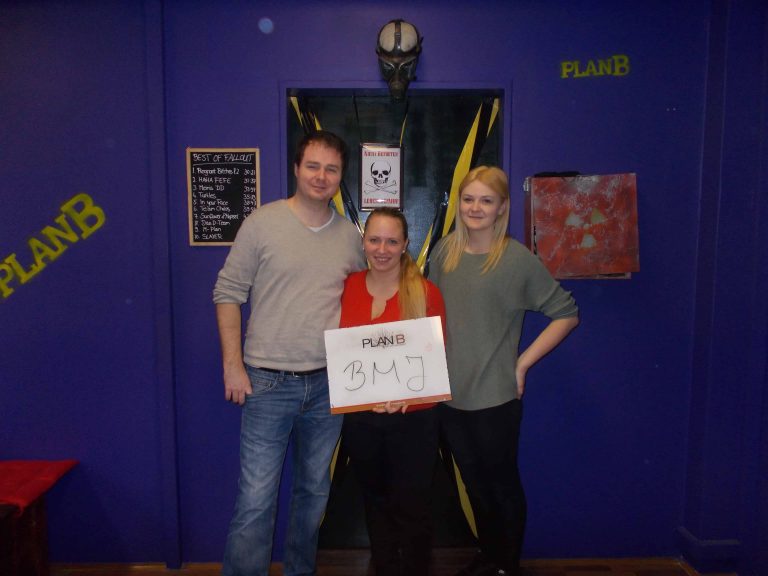I HAVE SHOT OVER 500 PROFESSIONAL ESCAPE ROOM PHOTOS. HERE I TELL YOU WHAT I HAVE LEARNED
Do the images you use to promote your Escape Room inspire enthusiasm?
Do your Escape Room photographs inspire the imagination of your customers?
When potential customers see the photos on your website, can’t you wait to book an Escape Game and explore the secrets that are hinted at in the pictures?
This blog entry is about Escape Room photography. We’ll give you four basic rules to create your own spectacular marketing images for your Live Escape Room.
Read on to discover the secrets behind the Escape Room photos that will help sell your Escape Games.
A first fundamental difference lies in the approach and attitude to photographing Escape Games.
Competitors often focus on copying a single style without realizing that a new photo concept should be developed for each new location.
For each new escape game to be photographed, the goal should be to create something unique – something with its own individual soul.
4 RULES FOR GREAT ESCAPE ROOM PHOTOS
It’s important to understand that high quality business photos need to combine many different factors – it’s not always enough to hire a good photographer.
Here are my recommendations for Escape Room photos that look alive and make your Escape Game an absolute must.
Even if you don’t have a large budget for promotional photography, if you follow these four rules, you’ll have found an efficient way to market your live escape game.
RULE 1: DON’T JUST TAKE A PICTURE OF YOUR ESCAPE ROOM – TELL A STORY
A snapshot taken with your phone outside the door of your Escape Room will not highlight the best qualities of the Escape Game.
Also think about what your target audience is looking for in an Escape Game adventure.
Yes, they know that they are in a room built for the purpose of an escape game. They know that they are not really trapped or in danger. But they want to imagine that they are in an environment that was promised to them – whether it is a medieval dungeon or a space station in another dimension.
So the photos of your Escape Room should not look like the set of a dungeon or a space station – they should look like real.
It’s like creating a poster for a movie.
You wouldn’t go into a feature film with a poster just showing the movie set.
So why would you expect an Escape Room customer to try your game when you promote it with equally inconspicuous images?
Escape Room photos should capture the viewer’s attention on two levels: the image and the story behind it (the implied adventure).
Setting: Underline the best features of your Escape Room
Escape Dream Players want to immerse themselves in another world.
Show them the best, most imaginative version of this world in your flight dream photos. To do this, you can use a wide angle and the highest resolution.
Of course, the better your flight dream looks in reality, the better the photos will look.
Photos of well-designed escape rooms are much easier to take because the settings are so realistic.
The most impressive Escape Rooms are not designed by entrepreneurs who just want to make money. They are designed with a lot of love for storytelling and incredible dedication to creating immersive environments for their customers.
When I get together with the teams behind these extraordinary live escape games, I often hear stories of sleepless nights, the formulation and perfection of ideas and non-stop days when the best engineers, builders and decorators want to get the most out of an escape game idea.
Some Claustrophobia franchisees have been working with cinema art directors
This all-in approach can be felt in every detail of the spaces they create.
The teams involved in this thorough, detailed planning offer the best customer experience and have the highest rated rooms.
And it’s only right to put the same time and effort into your promotional photography.
You should treat photography the same way.
Your photos should show potential customers how realistic your set decorations and props are and how much effort has been put into every little detail.
If you can add elements that can’t actually be found in the room, but reinforce the impression, don’t hesitate to use them.
Although these elements can’t be present in the Escape Room, they fan out players’ ideas before they book.
Adventure: Tell a story
It is not only the scenery, but also the history of the Escape Room that influences the customer perception of your photos.
Your room theme will help determine what kind of story to tell in the photos.
You will find that – to create good stories – some settings are simpler than others.
I have found that the most spectacular images come from escape rooms with unusual settings and stories: scary basements; caves; space stations; pirate ships; secret science laboratories; military bases; future; cyberpunk; post-apocalyptic bunkers. . . the universes of cinema and computer games.
These escape rooms require a much higher budget, but the results are worth it.
The most difficult photos are those of ordinary environments, such as offices, schools, gyms, apartments, hospitals and prisons, because the stories playing in such places can be seen every day in real life.
RULE 2: ALWAYS INTEGRATE PEOPLE INTO YOUR ESCAPE ROOM PHOTOS.
A picture of an empty room – no matter how artistically you shot it – doesn’t really stimulate the imagination.
When you add a model to an Escape Room photo, you complete the story. And that’s ultimately what your customers are looking for.
A good strategy if you have a tight budget is to have at least two models – usually a man and a woman. You photograph them in active poses that inspire teamwork; interacting with mechanisms, puzzles and hidden objects; in unexpected actions; and, of course, with lots of emotions.
A simple and obvious rule should be kept in mind: Customers see the models in the photos as placeholders for the people playing the game, i.e. potentially themselves. So if you want to represent Escape Game players in your photos, they should roughly match your target audience.
Since space narratives have become more complex, you should consider working with actors who also embody “non-player characters”. So if your escape game includes an old charismatic wizard, a witch, a knight or a crazy genius, add that character to the pictures as well.
Choosing the right models for your Escape Room photos
Of course, the actors in the photo strongly influence customer perception.
You may be surprised, but professional models are rarely suitable for shooting Escape Room photos.
Marketing an Escape Game is not the same as advertising a car, a phone or a kitchen. Many of the models you can find at model agencies are not used to the way they act to create a truly realistic Escape Room atmosphere.
You need actors who can play realistic emotions, movements and attitudes.
If you have artistic friends who can help you, this is the easiest way to recruit talent for your photo shoots.
If you decide to hire professionals, look for actors – or actresses – instead of photo models. They are often better suited!
Another piece of advice: If you take photos to promote several different rooms, make sure you use different actors for each Escape Room or adjust the costumes and make-up so that they are not recognizable as the same people every time.
The goal is that each Escape Game experience exists in its own fictional universe. If the same people exist in all universes at the same time, it will spoil the illusion.
RULE 3: AVOID SPOILERS.
When I’m talking about things that shouldn’t happen – then of course you should prevent the audience from discovering the secrets of your escape room before they have booked an escape game.
To do this, you should often change the arrangement of props throughout the room and consciously show actors performing actions that the real players don’t have to do during the course of the game.
RULE 4: HIRE A PHOTOGRAPHER WHO IS FAMILIAR WITH THE ESCAPE ROOM SCENE.
To unfold the full potential of the scenery, the plot and the actors, the last and most important element is the right photographer.
When the Escape Games were about to gain popularity, many specialized artists appeared: Escape Room designers, engineers, decorators and much more.
However, you couldn’t see that many Escape Room photographers appeared on the market. Unfortunately, photographers working in other industries tend to miss the real essence of the Escape Room.
For example, wedding photographers specialize in working in well-lit places and often do not have the necessary skills to use light for atmospheric effects.
Professional indoor photographers are not used to capturing the emotions of the actors. Studio commercial photographers specialize in working in large, clean environments where you can accommodate a flash and large softboxes.
When these photographers face a photo shoot in which they have to capture the fine details of a narrow, dark, dirty room with running water on the floor and an actor firing a gun, they are often unprepared.
So don’t stop looking until you find a photographer who understands the challenges of outstanding Escape Room photos.
CONCLUSION: THE DEVELOPMENT OF THE FUNTAINMENT INDUSTRY
As Escape Games evolve, Escape Room photography must also adapt to new needs.
The industry has not stopped and photography has changed with it.
Escape rooms inspire the creation of boundless new entertainment formats.
Today, immersive forms of entertainment have established themselves, including elements such as children’s quests; partially or fully immersive theatre performances (both on stage and in real locations); real-life puzzle quests; active games where atmosphere and story are more important than solving the puzzle; and much more.
For these areas, the boundaries of what can be shown in advertising images need to be extended.
There are several ways to take Escape Room photography to the next level:
Take photos with 20 actors instead of two or three.
Alternate the wide angle with close-ups of emotions.
Let the atmosphere of your pictures become denser and more cinematic – with dust, smoke and dirt flying around.
Experiment with effects that are missing from the game – water, blood, bombings, shots and open fire – to create spectacular cinematic images.
Create photos that surprise – from Escape Games or other immersive fun offerings.
This approach is the only way to continue developing a unique product and giving people access to the great Escape Game leisure experience.





